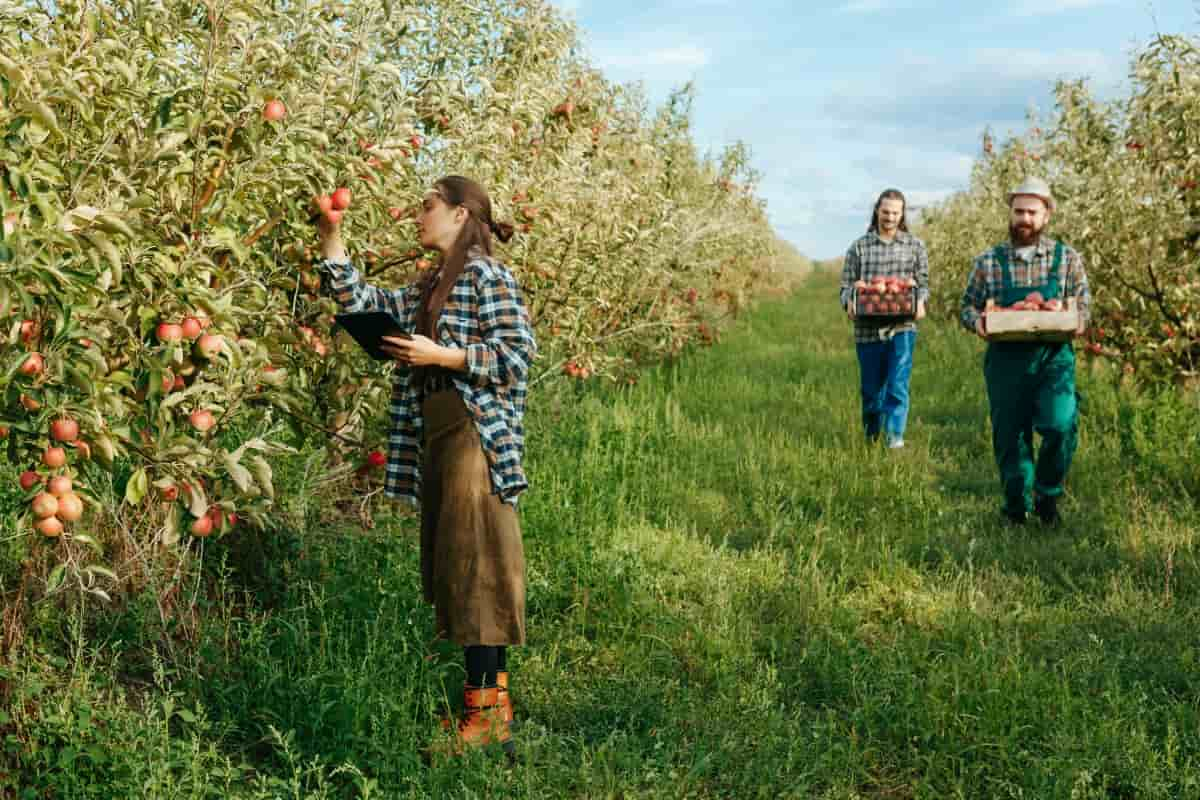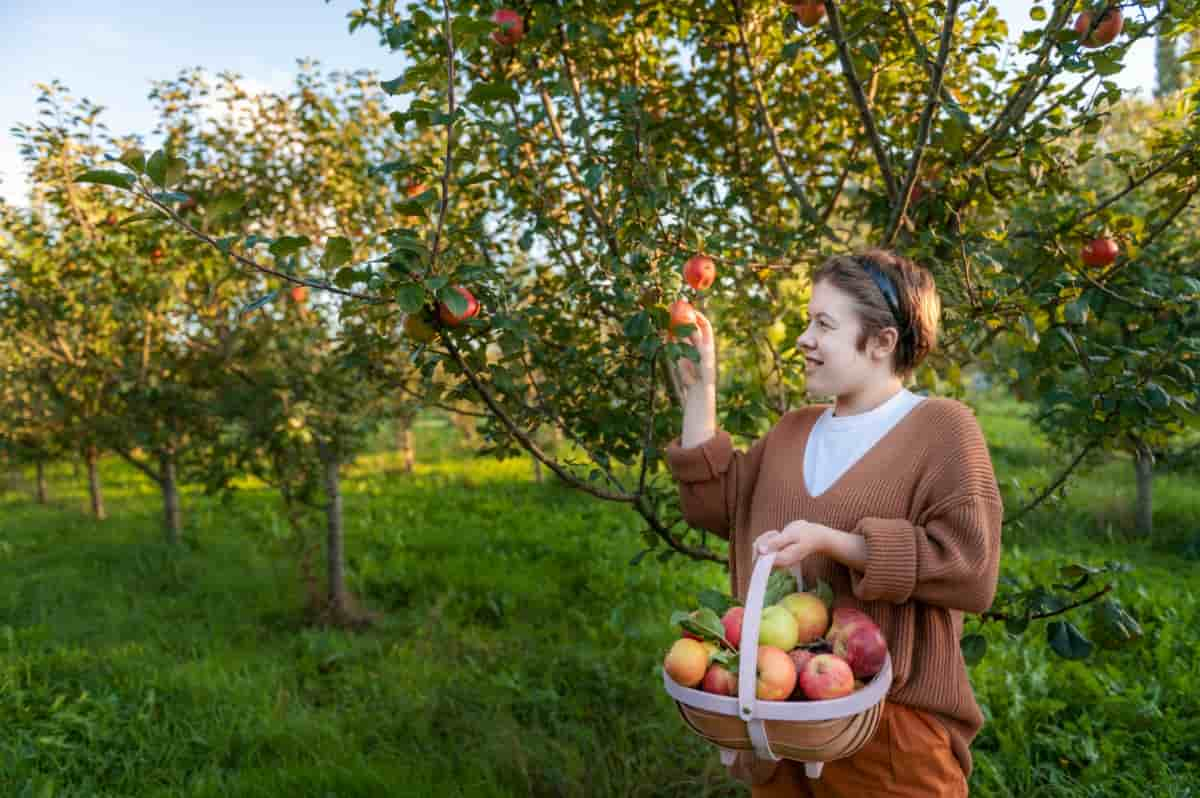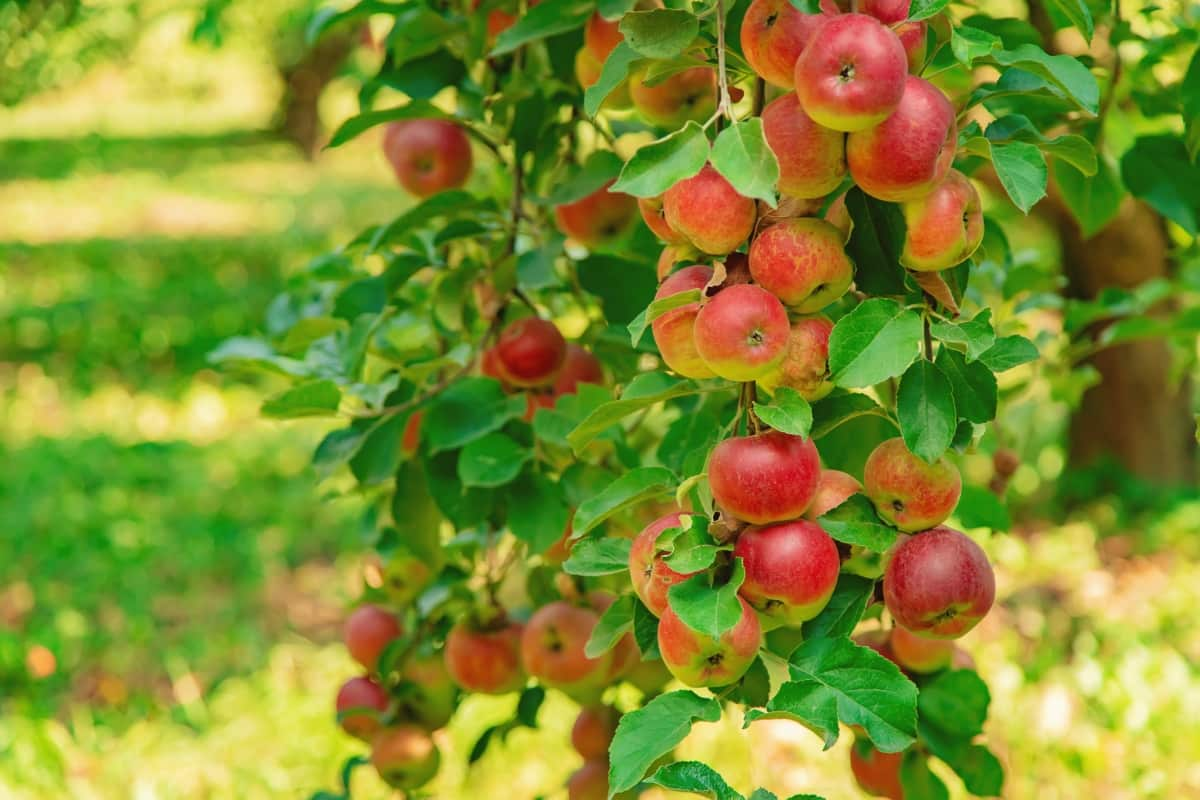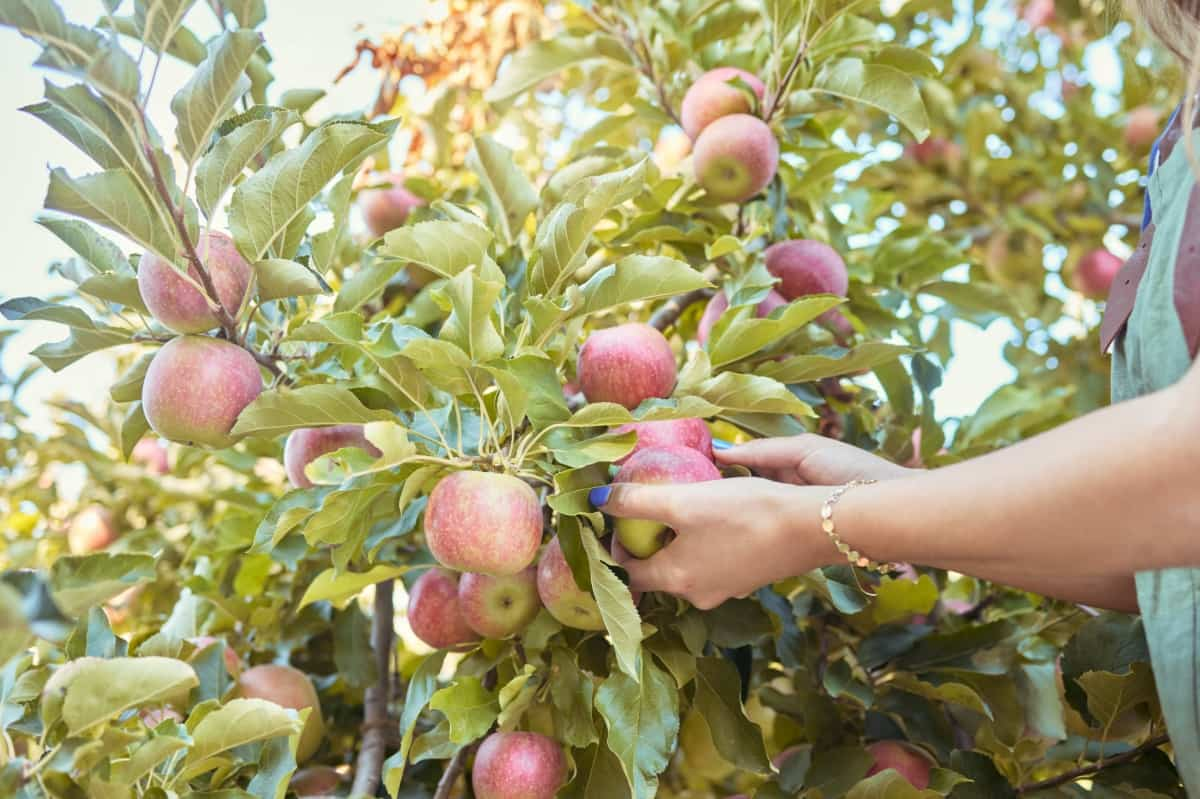Preventing Apple Cracking is crucial for growing high-quality, split-free apples. By implementing effective strategies such as water management, fertilization, pruning, and controlling pests and diseases, growers can minimize the risk of fruit cracking. In this blog, we’ll explore various techniques and practices to ensure crack-free apples in your orchard.

How to Prevent Apple Cracking
Causes of Apple Cracking
Rapid changes in environmental conditions, genetic variability, and poor cultural practices can cause Apple to crack. Understanding these factors is crucial for undertaking effective preventative measures and selecting resistant apple varieties to minimize cracking incidence in orchards.
Identifying Environmental and Cultural Factors
Environmental factors such as temperature fluctuations and excessive rainfall, along with cultural practices like improper pruning and fertilization, contribute to apple cracking. By identifying and addressing these factors, growers can mitigate cracking risk and maintain healthy apple trees in their orchards.
Role of Genetic Variability in Susceptibility
Genetic variability plays a significant role in determining the susceptibility of apple trees to cracking. By selecting resistant varieties and implementing proper fertilization practices, growers can minimize cracking incidence and ensure the overall health and productivity of their apple orchards.
Optimal Irrigation Practices
Proper irrigation is crucial for preventing apple cracking. Drip irrigation systems and mulching help maintain consistent soil moisture levels, reducing water stress on the trees and minimizing the risk of cracking. Timely irrigation scheduling based on weather conditions is essential for optimal fruit quality.
Scheduling and Methods to Prevent Drought Stress
Drought stress increases the susceptibility of apple trees to cracking. Implementing irrigation schedules based on soil moisture levels and using mulch to retain moisture can help prevent drought stress and minimize cracking risk, ensuring healthier apple trees and higher-quality fruit.
Impact of Irrigation on Skin Elasticity
Proper irrigation plays an significant role in maintaining the elasticity of apple skins. Consistent moisture levels in the fruit help prevent dehydration and maintain skin integrity, reducing the risk of cracking. By ensuring adequate irrigation, growers can produce apples with firmer, more resilient skins.
Balanced Fertilization
Balanced fertilization is essential for promoting healthy apple growth and reducing cracking risk. Soil testing helps determine nutrient deficiencies, allowing growers to apply fertilizers strategically to meet the trees’ needs. Avoiding over-fertilization is critical to prevent nutrient imbalances that can lead to cracking.
Key Nutrients to Prevent Cracking
Calcium, potassium, and boron are key nutrients that help prevent apple cracking by strengthening cell walls and improving fruit integrity. Supplementing the soil with these nutrients through targeted fertilization practices can effectively reduce cracking incidence and improve overall fruit quality in apple orchards.
Tailoring Fertilizer Applications for Apple Trees
Fertilizer applications should be adapted to the specific needs of apple trees to prevent cracking. Slow-release fertilizers provide a constant supply of nutrients, minimizing the risk of nutrient leaching and ensuring consistent growth and fruit development. Proper fertilization promotes healthier, more resilient apple trees.
In case you missed it: How to Prevent Cedar Apple Rust: Causes, Identification, Symptoms, and Treatment

Soil Moisture Management
Effective soil moisture management is crucial for preventing apple cracking. Techniques such as drip irrigation, mulching, and regular monitoring of soil moisture help ensure that apple trees receive adequate water without experiencing fluctuations that can lead to cracking.
Techniques for Consistent Soil Moisture Levels
Consistent soil moisture levels are essential for preventing apple cracking throughout the growing season. Techniques such as drip irrigation, mulching, and regular monitoring of soil moisture help ensure that apple trees receive adequate water without experiencing fluctuations that can lead to cracking.
Importance of Mulching in Moisture Retention
Mulching plays a vital role in retaining soil moisture and preventing apple cracking. Organic mulches, such as sugar trash, wood chips, or straw, create a protective layer above the soil, reducing evaporation and maintaining consistent moisture levels. Additionally, mulch helps suppress weed growth, conserving water for the apple trees.
Pruning for Healthier Trees
Proper pruning is significant for maintaining the health and vigor of apple trees, which in turn reduces the likelihood of cracking. Pruning removes diseased branches, improves airflow within the canopy, and enhances light penetration, promoting fruit ripening and minimizing cracking risk.
Pruning Strategies to Improve Airflow and Light Penetration
Strategic pruning strategies can improve airflow and light penetration within the apple canopy, reducing the risk of cracking. This involves thinning out dense areas of growth to allow for better air circulation and removing excess branches to ensure adequate light reaches all parts of the tree.
Effect of Pruning on Fruit Quality and Stress Reduction
In addition to reducing cracking risk, pruning has a positive impact on fruit quality and stress reduction in apple trees. Proper pruning promotes the development of strong, healthy branches capable of supporting heavy fruit loads, resulting in fewer incidences of cracking and improved overall tree health.
Thinning to Manage Fruit Load
Thinning techniques are effective in managing fruit load and preventing overcrowding. By removing excess fruit, the remaining ones have more space and resources to grow, reducing competition and stress. Proper thinning also helps to improve fruit size and quality, as the tree can allocate more nutrients and energy to the remaining fruit.
Thinning Techniques to Prevent Overcrowding
Thinning techniques such as hand thinning or chemical thinning can prevent overcrowding in apple orchards. Hand thinning involves manually removing excess fruit by hand, while chemical thinning utilizes growth regulators to thin out fruit clusters selectively. Excessive yield can lead to increased competition for resources and a higher susceptibility to cracking.
Relationship Between Fruit Load and Cracking
There is a direct relationship between fruit load and cracking in apples. When trees are overloaded with fruit, there is increased pressure on the branches and fruit, leading to higher chances of cracking, especially during periods of rapid growth or fluctuating weather conditions.
Growth Regulator Use
Growth regulators are utilized in apple orchards to manage fruit load and prevent overcrowding. These regulators help thin out fruit clusters selectively, reducing competition and stress on the tree. Proper application of growth regulators can contribute to improved fruit size and quality, ultimately reducing the risk of cracking.
Selection and Application of Growth Regulators
Proper selection and application of growth regulators are essential for effectively managing fruit load and preventing overcrowding in apple orchards. By choosing the right regulator and applying it at the correct stage of fruit development, growers can optimize fruit size and distribution, reducing the risk of cracking.
Influence on Fruit Development and Cracking Prevention
The use of growth regulators can have a significant influence on fruit development and cracking prevention in apple orchards. By optimizing fruit size and distribution, these regulators reduce the risk of cracking, especially during periods of rapid growth or fluctuating weather conditions.
In case you missed it: How to Control Apple Pests: How to Get Rid of Them with Natural and Organic Treatment

Pest and Disease Control
Pest and disease control is important for maintaining fruit integrity and preventing cracking in apple orchards. Identifying pests and diseases that weaken fruit integrity and implementing appropriate control measures are essential steps in cracking prevention.
Identifying Pests and Diseases That Weaken Fruit Integrity
Regular scouting and monitoring help identify pests and diseases that weaken fruit integrity. Common pests include apple maggots and codling moths, while diseases such as apple scab and powdery mildew can also affect fruit quality.
Integrated Management Approaches
Implementing integrated pest management (IPM) approaches helps to hinder the impact of pests and diseases on fruit integrity. IPM includes all the biological, cultural, and chemical control methods to manage pest and disease populations while minimizing environmental impact effectively.
Adaptation to Climate Variability
Adapting orchard management practices to climate variability is essential for reducing the risk of post-harvest cracking. Monitoring weather patterns and implementing strategies such as irrigation adjustments and canopy management can help mitigate the effects of extreme weather events on fruit quality.
Strategies to Mitigate the Impact of Extreme Weather
Extreme weather conditions such as heavy rain or hail can increase the risk of post-harvest cracking in apples. Implementing protective measures such as hail netting or overhead coverings can help minimize physical damage to fruit and reduce cracking risk.
Protective Measures for Orchard Climate Management
Protective measures such as windbreaks, shade structures, and microclimate management techniques help to create optimal growing conditions for apples. Maintaining stable orchard climates reduces stress on the fruit and minimizes the risk of post-harvest cracking.
Harvest and Post-Harvest Handling
Timing harvest to minimize cracking risk is crucial for preserving fruit quality. Harvesting apples at the appropriate maturity stage and handling them carefully during transportation and storage helps to prevent physical damage and reduce cracking risk.
Timing Harvest to Minimize Cracking Risk
Timing harvest to minimize cracking risk is crucial for preserving fruit quality. Harvest apples when fully colored and firm, avoiding periods of heavy rain or high humidity. Moderate soil moisture levels reduce water uptake by the fruit. Consider tree health and variety-specific factors. Gentle handling and proper storage further reduce cracking risk.
Techniques for Reducing Post-Harvest Cracking
Implementing post-harvest treatments such as controlled atmosphere storage and humidity management helps to reduce post-harvest cracking in apples. Proper storage conditions slow down fruit respiration and aging processes, preserving fruit quality and reducing the risk of cracking.
In case you missed it: Management of Fungal Diseases on Apple Trees: How to Control and Prevent with Natural and Organic Treatment

Conclusion
Preventing apple cracking requires a combination of careful water management, soil moisture techniques, and proper nutrient balance. By optimizing orchard climate, implementing post-harvest handling practices, and considering genetic research on apple cracking, growers can successfully produce crack-free apples and enhance the overall quality of their harvest.
- Beneficial Insects in Pest Management
- Natural Solutions for Pest Control in Flower Gardens
- Types of Fungicides Used in Agriculture
- Common Issues in the Fruit Development Stage of Pomegranate Farming
- Fruit Development Issues in Papaya: Easy Solutions and Treatment
- Soil-Borne Diseases and How to Protect Your Plants
- Practices to Prevent Disease Spread in the Garden
- From Wilted to Thriving: How to Treat Root Rot Naturally in Houseplants
- Natural Remedies to Cure Brown Spots on Fig Tree Leaves